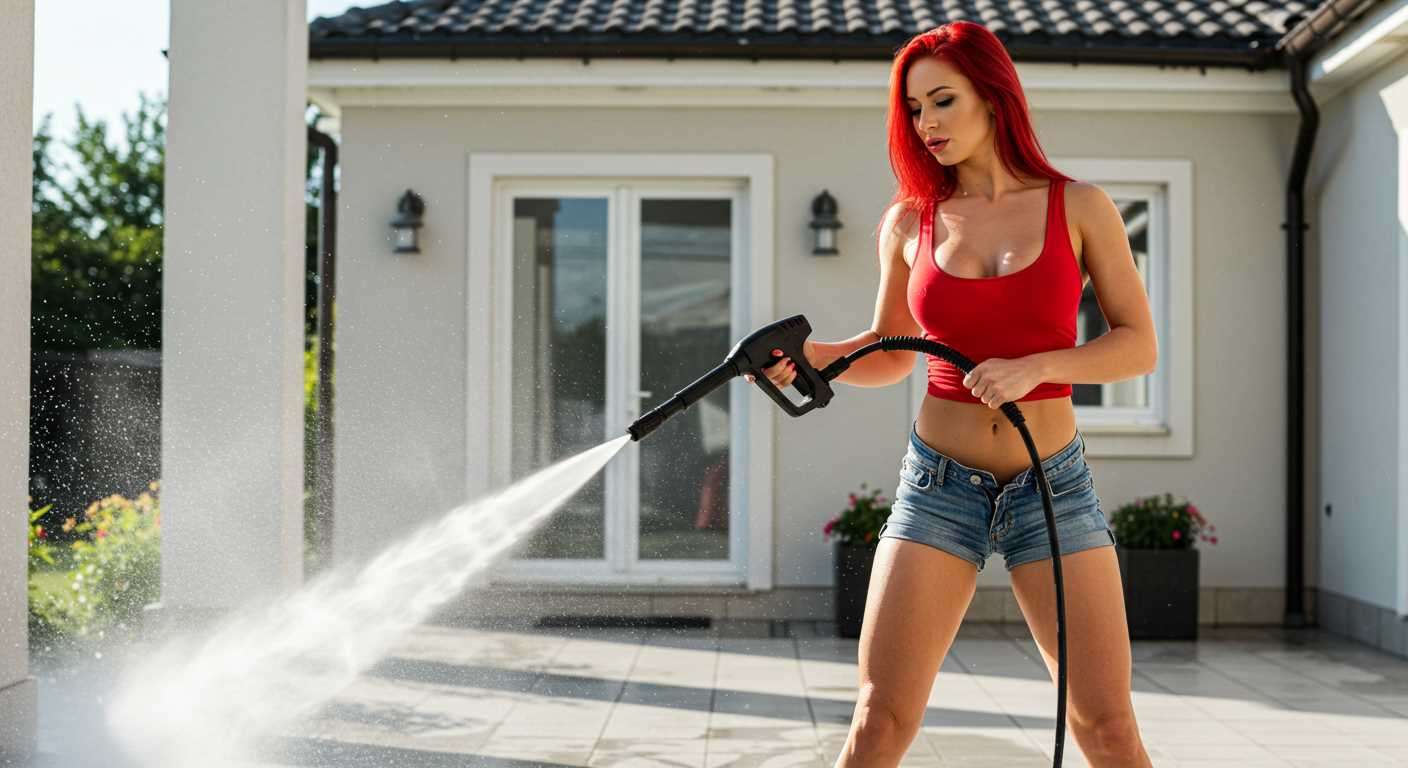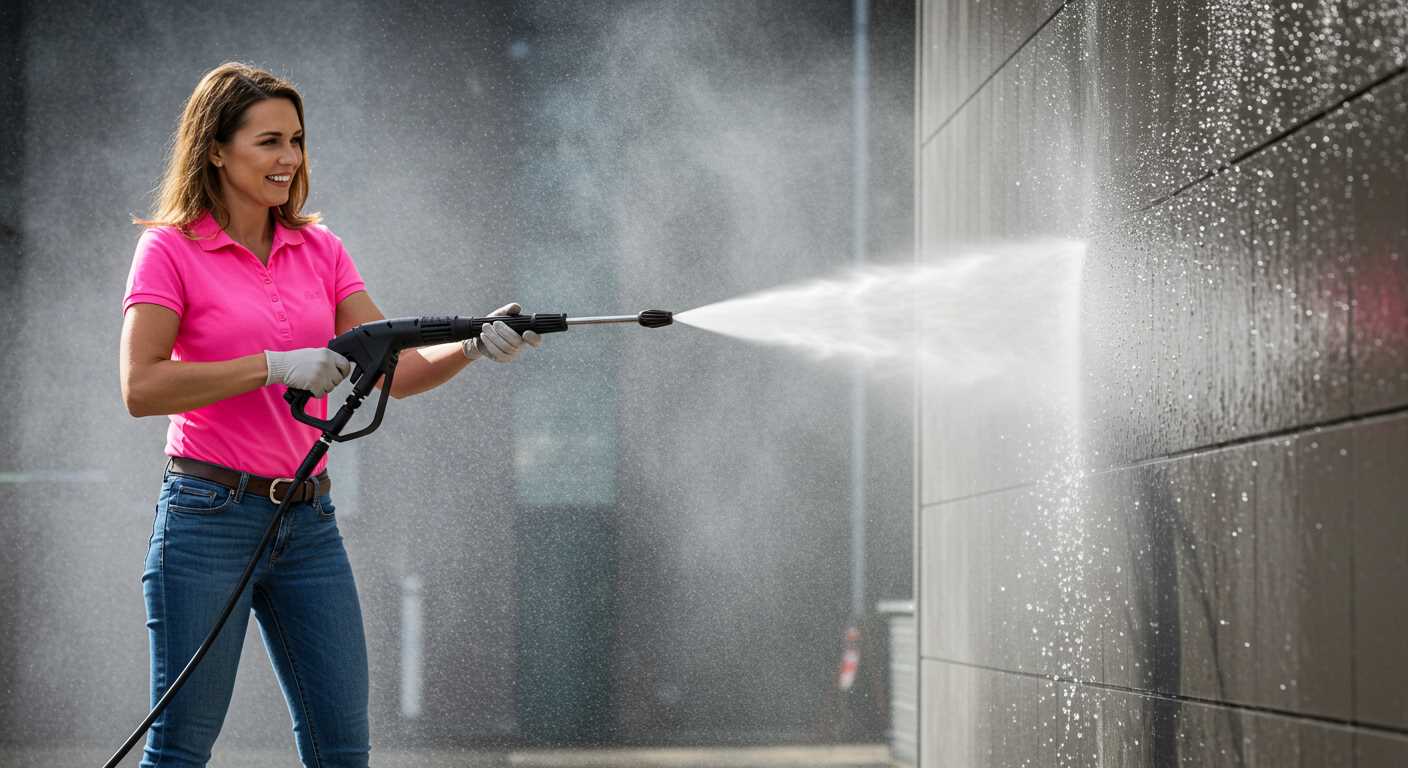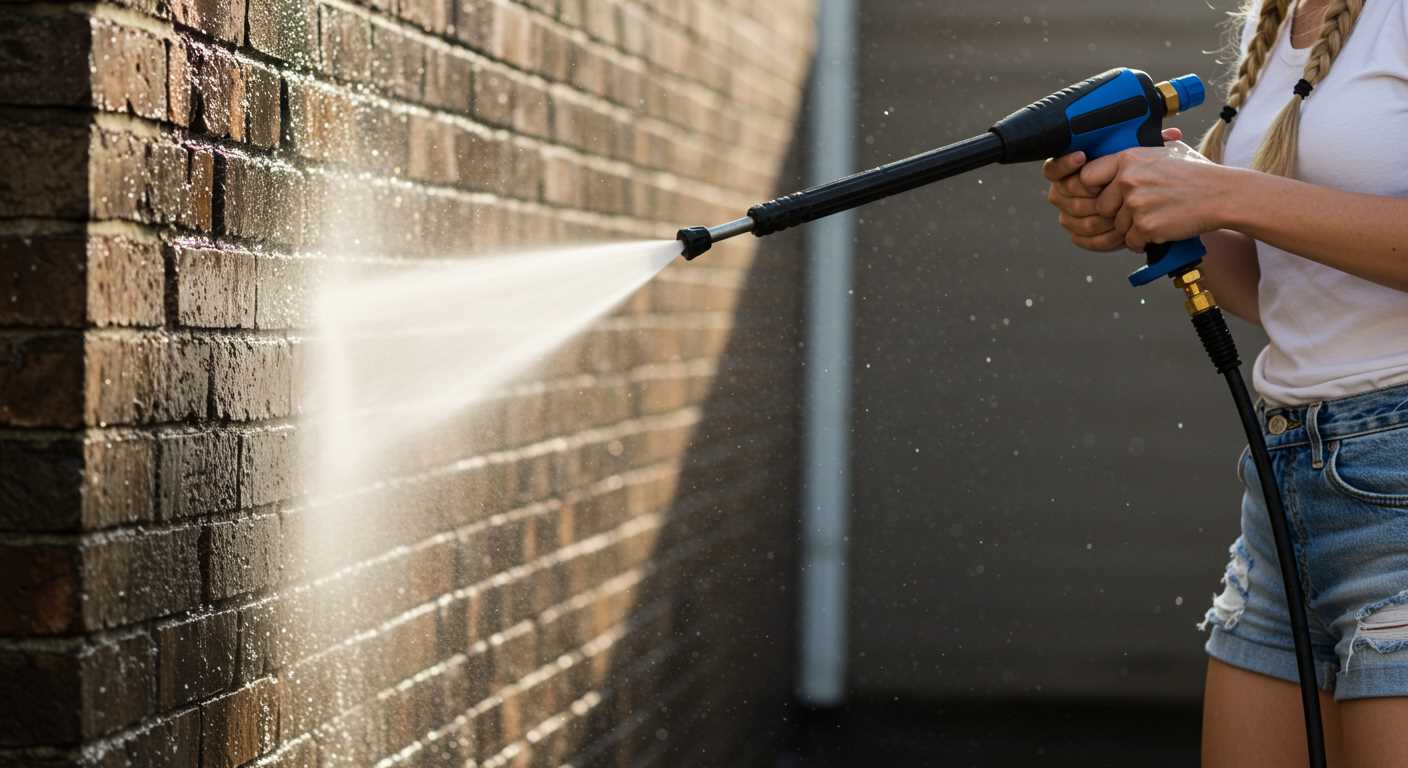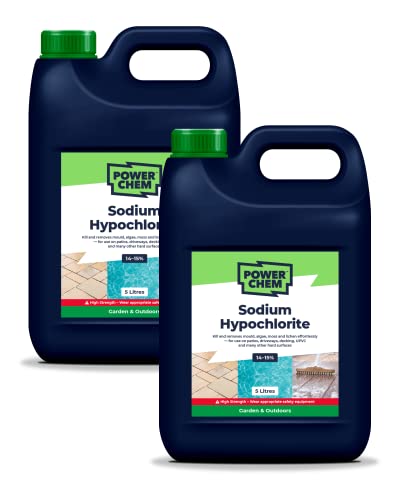



Begin by rinsing off loose dirt and debris from the surface, which prevents scratches during the process. A wide spray angle tip is ideal for this initial step, ensuring a gentle yet thorough wash. Aim for the lower sections first, gradually working your way up to avoid splashing dirt back onto cleaner areas.
Next, employ a quality car shampoo designed for safe application with equipment of this type. Mix the cleaner with water according to the manufacturer’s instructions; at this point, a foaming nozzle can deliver a thick lather. Cover the entire exterior evenly, allowing the foam to work on grime and stubborn stains for several minutes.
After the dwell time, switch back to a narrower spray pattern, focusing on high-pressure rinsing. Maintain a consistent distance to protect paintwork from damage while effectively removing soap and loosened contaminants. This method ensures that the vehicle emerges sparkling, enhancing its visual appeal and longevity.
Finally, take care of the details. Use a soft-bristle brush for wheels and other intricate areas, followed by a light rinse. Employing a drying technique with microfiber towels prevents water spots and ensures that every part of the vehicle remains pristine.
Effective Strategies for Vehicle Detailing
Begin with the appropriate nozzle attachment for the task. A fan spray nozzle is preferable, as it provides a broader coverage while minimising the risk of damage to the paintwork. Position the device at least 2 feet away from the surface when applying water, gradually decreasing this distance if more pressure is needed on tougher grime.
Thorough Pre-Wash Preparation

Prior to the main wash, success hinges on rinsing the vehicle with plain water. This step removes loose dirt and debris, paving the way for an efficient cleaning process. Always spray from top to bottom; this method prevents dirt from sliding down onto already cleaned sections.
I recommend using a dedicated automotive cleaning solution. Ensure it is compatible with the equipment to prevent potential damage. Mix the solution according to the manufacturer’s instructions. A foam cannon can enhance results by distributing the soap evenly, allowing it to cling to the surface.
Washing Technique and Rinsing
Start from the roof and work downwards, employing a sweeping motion with the stream to effectively dislodge any stuck-on contaminants. Pay close attention to areas around the wheels and beneath the vehicle, as these spots often harbour more dirt.
After the soapy application, rinse again with clean water. This step is crucial; run-off soap residue can lead to unsightly streaks if not thoroughly removed. Aim for the same top-to-bottom technique, ensuring every part is washed away.
Finish the process by drying with a soft, lint-free towel or chamois. This helps prevent water spots and gives a polished finish. Regular application of a quality wax can further protect the exterior, enhancing its longevity and appearance.
Choosing the Right Pressure Washer for Your Car
Selecting a suitable model involves understanding the right specifications. A unit with a power rating between 1200 to 1900 PSI is optimal for vehicle exteriors. This range effectively removes grime without damaging delicate surfaces.
Consider the GPM (gallons per minute) as well. A flow rate of around 1.5 to 2.0 GPM provides sufficient water volume to carry away dirt and debris while preventing streaking.
Equipment weight and portability matter. Lightweight, compact options are easier to manoeuvre, especially when accessing tight spaces around the vehicle. Look for models equipped with wheels for enhanced mobility.
Make sure to check for adjustable nozzles or interchangeable tips. A wide spray angle is beneficial for rinsing large areas, while a narrower jet is effective for focused cleaning on stubborn spots.
Electric units are generally quieter and easier to maintain compared to their gas counterparts. They are a practical choice for residential use, providing convenience without excessive noise or emissions.
Lastly, prioritise durability. Examine materials used in construction. A solid frame and quality components contribute to longevity, ensuring reliable performance through regular applications.
Preparing Your Vehicle for the Task
.jpg)
Ensure that all windows are closed tightly and sunroofs are shut to prevent water intrusion. It’s smart to remove any personal items and decorations, as flying debris during the wash can damage them.
Clear the Surrounding Area
Position the automobile at least 10 feet away from structures, plants, and other vehicles to prevent any accidental impact. Remove any obstacles or potential hazards nearby to create a safe working environment. This reduces the chance of accidents while cleaning.
Inspect for Existing Damage
Check for scratches, dents, or paint chips before starting. It’s advisable to note these areas to avoid causing further damage. If the surface has a wax or sealant, confirm that it is intact to ensure the best results from the wash process.
Lastly, a good initial rinse with water from a hose or bucket removes loose dirt and debris. This step is particularly significant as it prevents the particles from scratching the finish during cleaning. After these preparations, you are set for an effective washing experience.
Selecting the Appropriate Nozzle for Different Surfaces
Begin with a 0-degree nozzle for targeted cleaning, ideal for stubborn grime on wheels and tires. This nozzle type delivers a concentrated stream, making it effective for areas requiring intense focus. However, be cautious; this setting can damage delicate surfaces if used improperly.
For general bodywork, the 15-degree or 25-degree nozzles are preferable. These angles provide a wider spray while still offering sufficient power to remove dirt without risking paint damage. I recommend starting at a distance and gradually moving closer to gauge the impact on the surface.
Specific Surface Recommendations
When addressing glass or mirrors, opt for a 40-degree nozzle. Its gentle dispersion reduces the likelihood of shattering while effectively removing dirt and residue. Always maintain a minimum distance to ensure no abrasiveness occurs.
For intricate areas, like undercarriages or wheel wells, a rotating nozzle can enhance cleaning efficiency. The rotating aspect increases coverage while reducing the risk of lingering stains and contaminants. Utilize this setting sparingly to avoid excessive wear on sensitive components.
Choosing the correct nozzle is key to achieving optimal results while maintaining vehicle integrity. Always refer to the manufacturer’s guidance on distance and pressure settings tailored to specific surfaces.
Applying Cleaning Solutions Safely and Effectively
Start by selecting a suitable cleaning agent designed specifically for automotive surfaces. Concentrate on eco-friendly options that are compatible with your vehicle’s finish. Always check the label for recommendations on dilution ratios; most products are concentrated and will require mixing with water before application.
Preparation Steps
Before applying any solution, ensure your vehicle has cooled down after exposure to sunlight. This prevents rapid evaporation of the product, which can lead to spots or streaks. Use a spray bottle or foam cannon for uniform distribution. Aim for a consistent layer over the surface, avoiding areas that are overly porous or sensitive.
Safety Precautions
Wear protecting gear: gloves, goggles, and a mask if necessary. Conduct a spot test on a small, inconspicuous area to ensure compatibility with your vehicle’s surface. When dealing with cleaning agents, be cautious of overspray onto sensitive components like windows or plastic trim, as some chemicals may cause damage.
| Cleaning Agent | Surface Compatibility | Recommended Dilution |
|---|---|---|
| pH-Neutral Shampoo | All exterior surfaces | 1:10 |
| All-Purpose Cleaner | Wheels and tires | 1:4 |
| Wax or Sealant | Paint and clear coat | Follow product instructions |
After application, allow the solution to sit for the recommended time to maximise effectiveness. Rinse thoroughly using a lower-pressure setting to remove residues without damaging the vehicle’s finish. Following these guidelines ensures not just cleanliness but also the maintenance of your vehicle’s aesthetic appeal.
Techniques for Rinsing and Drying After Pressure Washing

Start with a thorough rinse using clean water. This prevents soap residues from remaining on surfaces, which can lead to streaks. Employ a wide-angle nozzle to ensure an even application across the vehicle, especially in hard-to-reach areas like wheel arches and around mirrors.
Rinsing Techniques

Maintain a steady distance of approximately two to three feet between the nozzle and the surface for optimal results. Begin from the top and work your way down, allowing gravity to assist in the removal of dirt and soap. For stubborn spots, a targeted approach with a narrower nozzle can enhance effectiveness.
After rinsing, inspect for any lingering cleaning solution or debris. A gentle touch with a soft sponge or cloth may be necessary for areas that require extra attention. Ensure that all parts of the exterior are thoroughly rinsed, including windows and trim, to avoid any unsightly marks.
Drying Techniques
For drying, microfibre towels are highly recommended. They absorb moisture without scratching the surface, ideal for vehicle finishes. Start at the top and work downwards, similar to rinsing, to prevent water from collecting in lower areas. Use a blotting technique rather than dragging the towel, which reduces the risk of swirl marks.
After towel drying, consider a final touch with a leaf blower or an air compressor. This helps remove any remaining water from crevices and around badges, ensuring a spotless finish.
For an added layer of protection, applying a wax or sealant after the drying process can enhance shine and offer a barrier against contaminants. Always wait until the surface is completely dry before proceeding with any protective application.
Maintaining Your Pressure Cleaner for Future Use
After every operation, ensure the equipment is thoroughly rinsed to eliminate any detergent residue. This prevents clogging and preserves the functionality of the internal components.
Follow these steps for optimal upkeep:
- Flush the system: Run clean water through the machine for a few minutes.
- Drain the tank: Empty any remaining liquid to avoid corrosion.
- Check hoses: Inspect for cracks or wear. Replace damaged segments immediately.
- Clean filters: Remove and rinse filters to maintain airflow and pressure.
- Store properly: Keep the device in a dry, protected environment, ideally indoors.
Always refer to the manufacturer’s manual for specific maintenance recommendations. Regular servicing will significantly prolong the lifespan of the device and ensure reliable performance during future operations.
Consider the following tips for seasonal checks:
- Inspect seals and o-rings for any signs of wear.
- Test the power supply and extension cords for safety.
- Lubricate moving parts as recommended in the manual.
- Conduct a functional test before each major use to spot any issues early.
By adhering to these maintenance practices, I’ve consistently seen improved longevity and effectiveness in my equipment. A little effort now saves time and money down the road.








